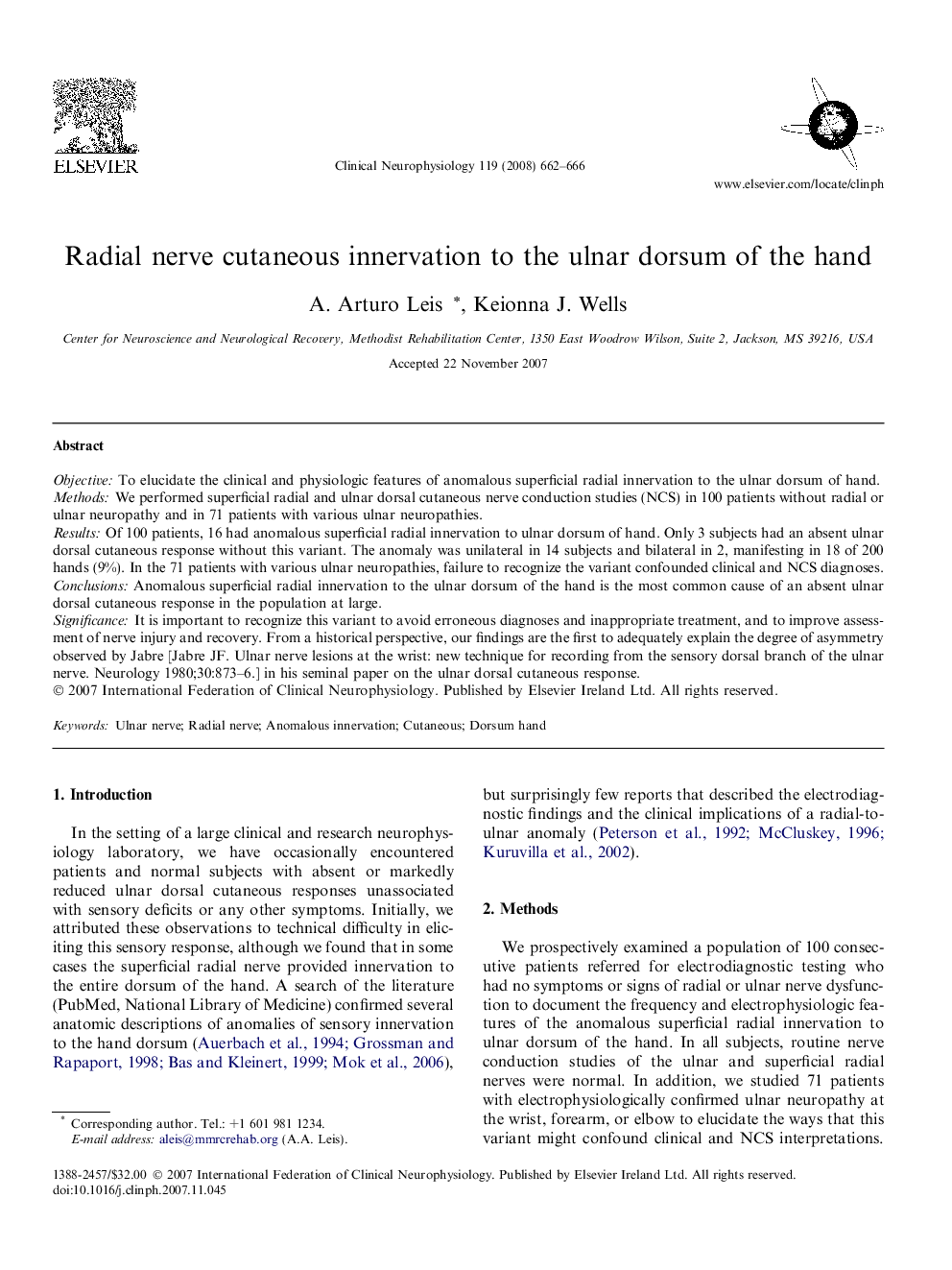| Article ID | Journal | Published Year | Pages | File Type |
|---|---|---|---|---|
| 3046600 | Clinical Neurophysiology | 2008 | 5 Pages |
ObjectiveTo elucidate the clinical and physiologic features of anomalous superficial radial innervation to the ulnar dorsum of hand.MethodsWe performed superficial radial and ulnar dorsal cutaneous nerve conduction studies (NCS) in 100 patients without radial or ulnar neuropathy and in 71 patients with various ulnar neuropathies.ResultsOf 100 patients, 16 had anomalous superficial radial innervation to ulnar dorsum of hand. Only 3 subjects had an absent ulnar dorsal cutaneous response without this variant. The anomaly was unilateral in 14 subjects and bilateral in 2, manifesting in 18 of 200 hands (9%). In the 71 patients with various ulnar neuropathies, failure to recognize the variant confounded clinical and NCS diagnoses.ConclusionsAnomalous superficial radial innervation to the ulnar dorsum of the hand is the most common cause of an absent ulnar dorsal cutaneous response in the population at large.SignificanceIt is important to recognize this variant to avoid erroneous diagnoses and inappropriate treatment, and to improve assessment of nerve injury and recovery. From a historical perspective, our findings are the first to adequately explain the degree of asymmetry observed by Jabre [Jabre JF. Ulnar nerve lesions at the wrist: new technique for recording from the sensory dorsal branch of the ulnar nerve. Neurology 1980;30:873–6.] in his seminal paper on the ulnar dorsal cutaneous response.
